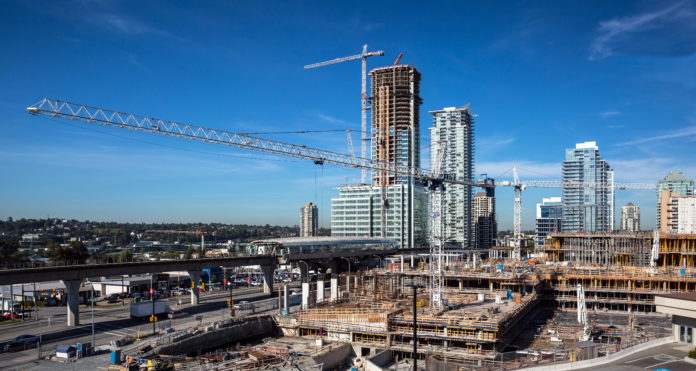
Recent data from Statistics Canada suggests that Canada is continuing to lose tens of thousands of construction jobs, despite meeting its target immigration levels every year and also preparing to welcome more skilled trades people going forward.
The Canada construction sector witnessed the loss of 45,000 jobs in July – a 2.8 percent drop from the preceding month. June itself had a 0.8% drop in construction jobs compared to July, which showcases how construction job losses are steadily rising over time.
Currently, construction is losing more jobs than any other major sector, and the problem is only going to get worse as a wave of retirements is set to descend soon upon the industry.
This issue, however, is not breeding in isolation; Canada is currently also suffering from a housing shortage that runs in the millions, without solving which housing affordability would plummet within this decade.
Canada Mortgage and Housing Corp., in fact, forecasts that 3.5 million more homes need to be built (on top of what the country is already planning to build) by 2030.
Read More:
High Immigration “May Not be the Cause or the Answer for Canada’s Economic Underperformance”
Immigrant Entrepreneurs Increasingly Using Start-Up Visa Program to Immigrate to Canada
Candidates Must be Active in Start-Up Visa Business or Have Canada Permanent Residence Application Denied
The number of new homes built is declining, however, from a little over 271,000 in 2021 to 260,000 in 2022.
According to Immigration Minister Marc Miller, this housing crisis “absolutely cannot” be solved without new immigrants to Canada. He therefore does not plan on slashing Canada’s historic immigration targets, and has even suggested that he would encourage those plans to keep rising.
“With provinces like Ontario needing 100,000 workers to meet their housing demands, it is clear that immigration will play a strong role in creating more homes for Canadians,” tweeted Miller on August 10, 2023.
Miller said in Montreal that 60 percent of new immigrants to Canada are economic immigrants, and many of them possess the scarce skills needed to construct more housing.
Global News was told by a spokesperson from Miller’s office last week that fulfilling Canada’s labour shortages is one of Miller’s key priorities, and one of the key goals of the government’s immigration targets.
“Strategies like Express Entry, and the historic Immigration Levels Plan, which is largely made up of economic migrants, are a great asset to our nation as they will directly help combat the ongoing labour shortage,” told press secretary to the immigration minister, Bahoz Dara Aziz, to Global News.
“This is especially true when it comes to the housing sector.”
Canada’s construction sector meanwhile suffers from 80,000 job vacancies, as said by CIBC deputy chief economist Benjamin Tal. These vacancies drive up building costs and are an impediment to productivity.
Watch Video:
Just last week, the federal government launched the category-based selection stream for newcomers that have had work experience in the skilled trades.
Under this, Immigration, Refugees and Citizenship Canada (IRCC) is going to invite candidates from the Express Entry pool who are eligible for a specific category established by the Minister to meet an identified economic goal.
The criteria based on which said invitations are sent are:
- ability to communicate in a specific official language
- work experience in a specific occupation
- education
Earlier this year, Canada also doubled the number of out-of-status construction workers in the Greater Toronto Area (GTA) to whom it granted permanent residence under a temporary immigration pathway.
Former Immigration Minister Sean Fraser had said in relation to this change that “this pilot program is a significant step forward in addressing critical labour shortages for the Greater Toronto Area by supporting stability in the construction industry and bringing workers out of the underground economy.”
“By providing regular pathways for out-of-status migrants, we are not only protecting workers and their families but also safeguarding Canada’s labour market and ensuring that we can retain the skilled workers we need to grow our economy and build our communities.”
This shows Canada’s macro-level initiative of bringing in as many construction workers as possible to the country to address the pressing housing crisis, as well as the job vacancy crisis in construction itself.

